Marriage & Birth Certificates are some of the most commonly translated documents for immigration. Avoid delays or rejections by steering clear of the mistakes immigration offices actually care about—not the ones most people think they care about.
Let’s make it easy: here’s what often goes wrong when translating Marriage & Birth Certificates, and how you can avoid common mistakes with confidence.
If you need to translate a marriage or birth certificate for immigration, school, or legal use, this guide is for you. In this post, you’ll learn:
✅ The most common mistakes people make when translating Marriage & Birth Certificates
✅ What immigration offices in countries like Australia, the US, Canada, and the UK really expect
✅ Why certified translation matters—and how to get it
✅ How to avoid delays, rejections, and extra costs
✅ What to check before you submit your translation
💡 Why This Matters More Than You Think
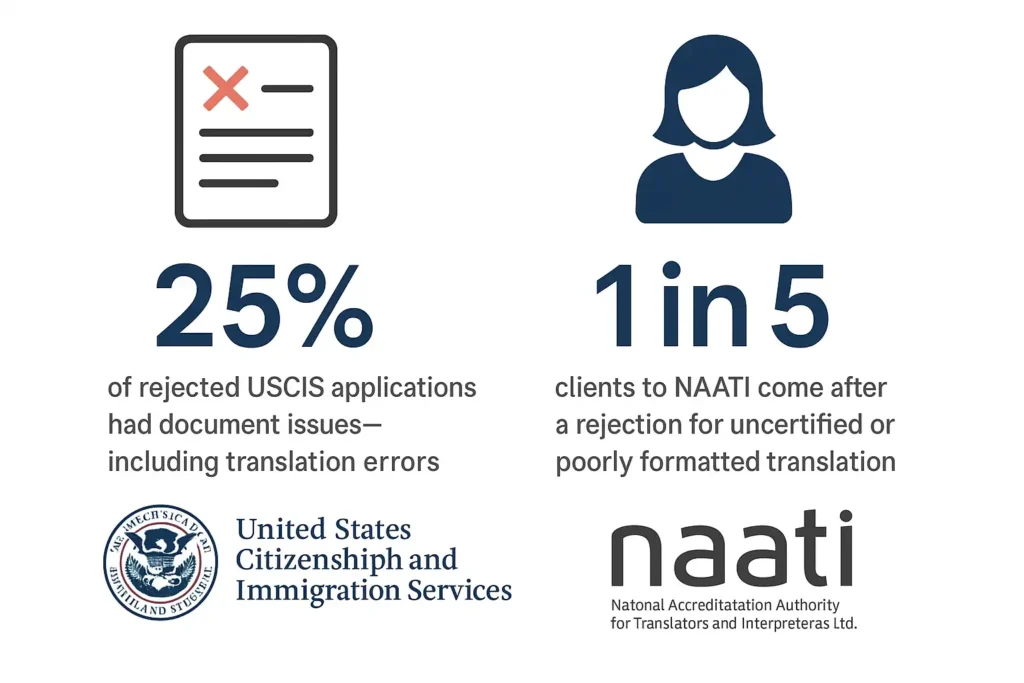
A 2021 review by the USCIS (United States Citizenship and Immigration Services) found that over 25% of rejected applications involved document issues—including translation errors in Marriage & Birth Certificates.
In Australia, NAATI-certified agencies report that 1 in 5 clients come to them after a rejection due to using an uncertified or poorly formatted translation. That’s wasted time, money, and stress.
❌ Mistake #1: Skipping the “Small Stuff” in Marriage & Birth Certificates
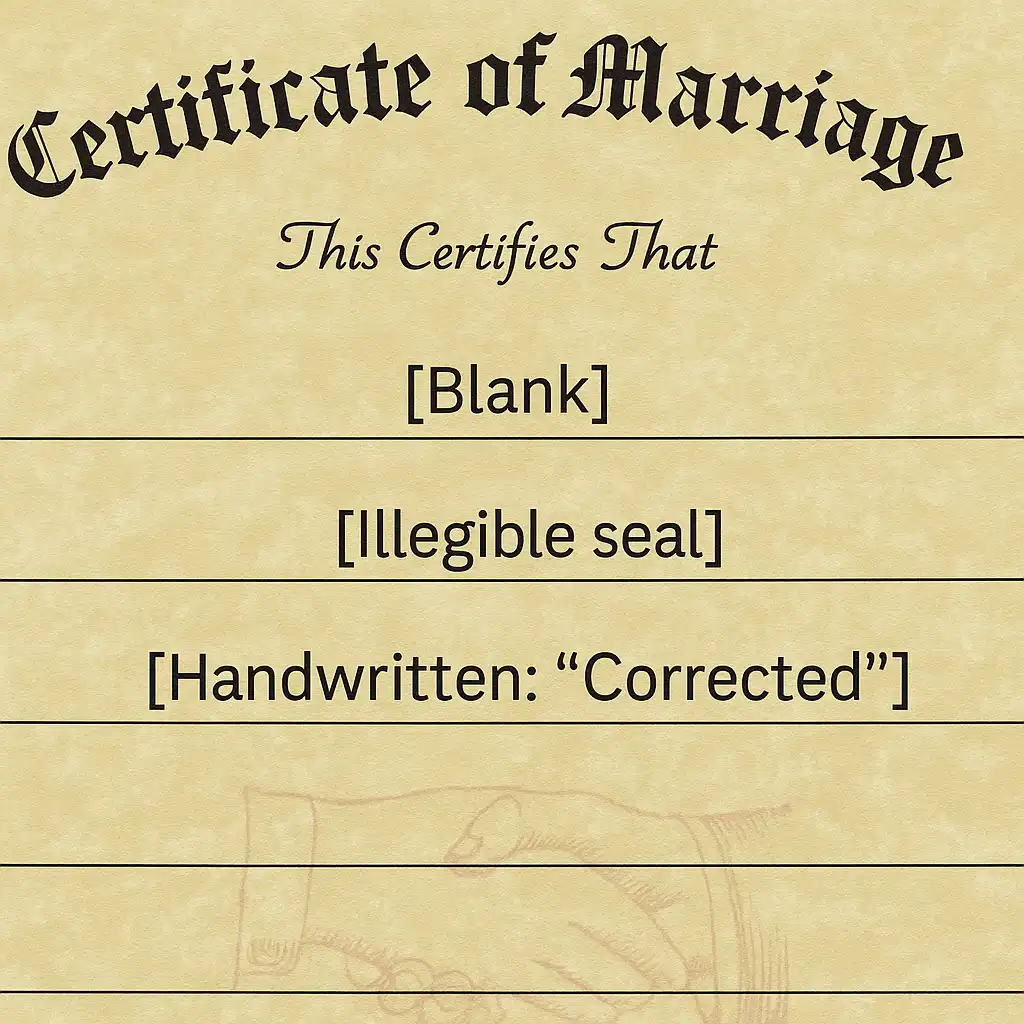
What many people do:
Ignore details like stamps, handwritten notes, or even blank lines, thinking they’re not important.
Why it’s a problem:
Most immigration and government offices—whether in the US, Canada, UK, EU, or Asia—require a complete, word-for-word translation. Leaving anything out can lead to rejection.
✅ What to do instead:
Translate everything. If something is unclear or blank, write it clearly:
- “[Blank]”
- “[Illegible seal]”
- “[Handwritten: ‘Corrected’]”
This shows you’re not skipping anything, and adds to your document’s credibility.
⚠️ Mistake #2: Using the Wrong Format for Marriage & Birth Certificates
Example:
Someone applying for a spousal visa in Canada submitted a basic paragraph-style translation—but the embassy required a certified line-by-line version. It was rejected.
Why?
Different countries have different expectations about how official documents should be presented.
Here’s a quick guide:
Here’s how different countries compare:
| Country | Required Format | Certification Needed? |
|---|---|---|
| Australia | Line-by-line bilingual | Yes (NAATI-certified) |
| USA (USCIS) | Word-for-word | Yes (Signed & dated) |
| Canada | Paragraph or line-by-line | Yes (Certified or affidavit) |
| UK | Paragraph OK | Yes (Professional statement) |
✅ What to do:
Ask your translator if they know the format your destination country requires—or check with your immigration adviser.
🧾 Mistake #3: Name Doesn’t Match the Passport
Real example:
A client had her name as “Li Wei” in the certificate translation, but her passport said “Wei Lee.” Immigration paused her file for months to verify her identity.
Why this matters:
Even small differences in spelling—especially between languages using different alphabets—can cause confusion, delays, or even suspicion of fraud.
✅ What to do:
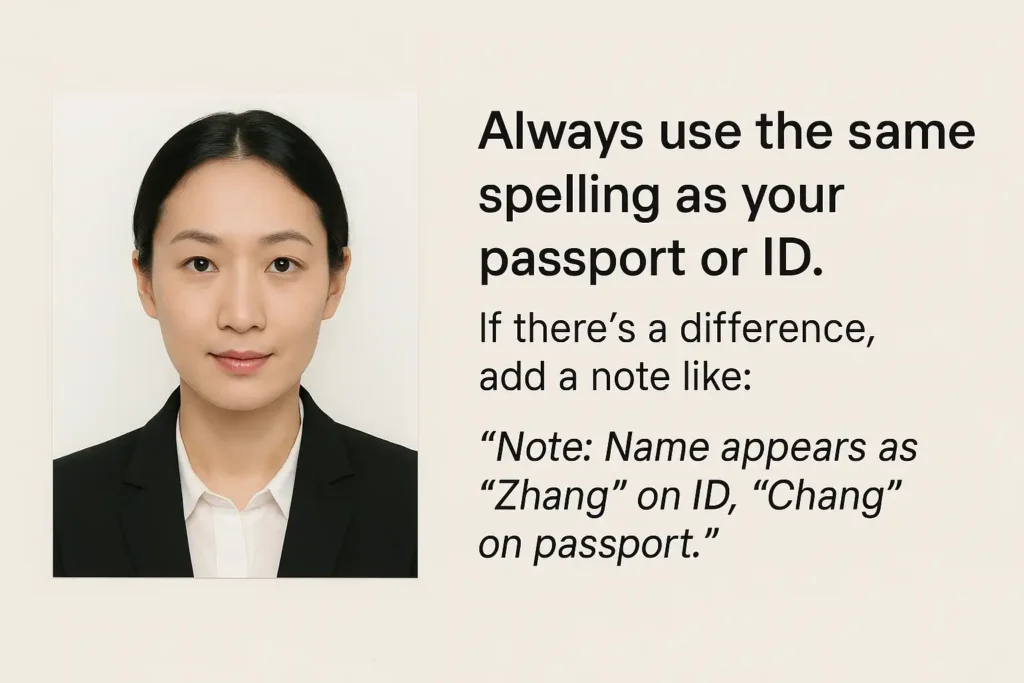
Always use the same spelling as your passport or ID.
If there’s a difference, add a note like:
“Note: Name appears as ‘Zhang’ on ID, ‘Chang’ on passport.”
🖋 Mistake #4: No Certification Statement
The translation looks fine—but it’s still rejected. Why?
Because it’s not certified.
Most immigration offices require a signed declaration that proves the translation is accurate and done by a qualified person.
✅ What to do:
Request a certified translation with:
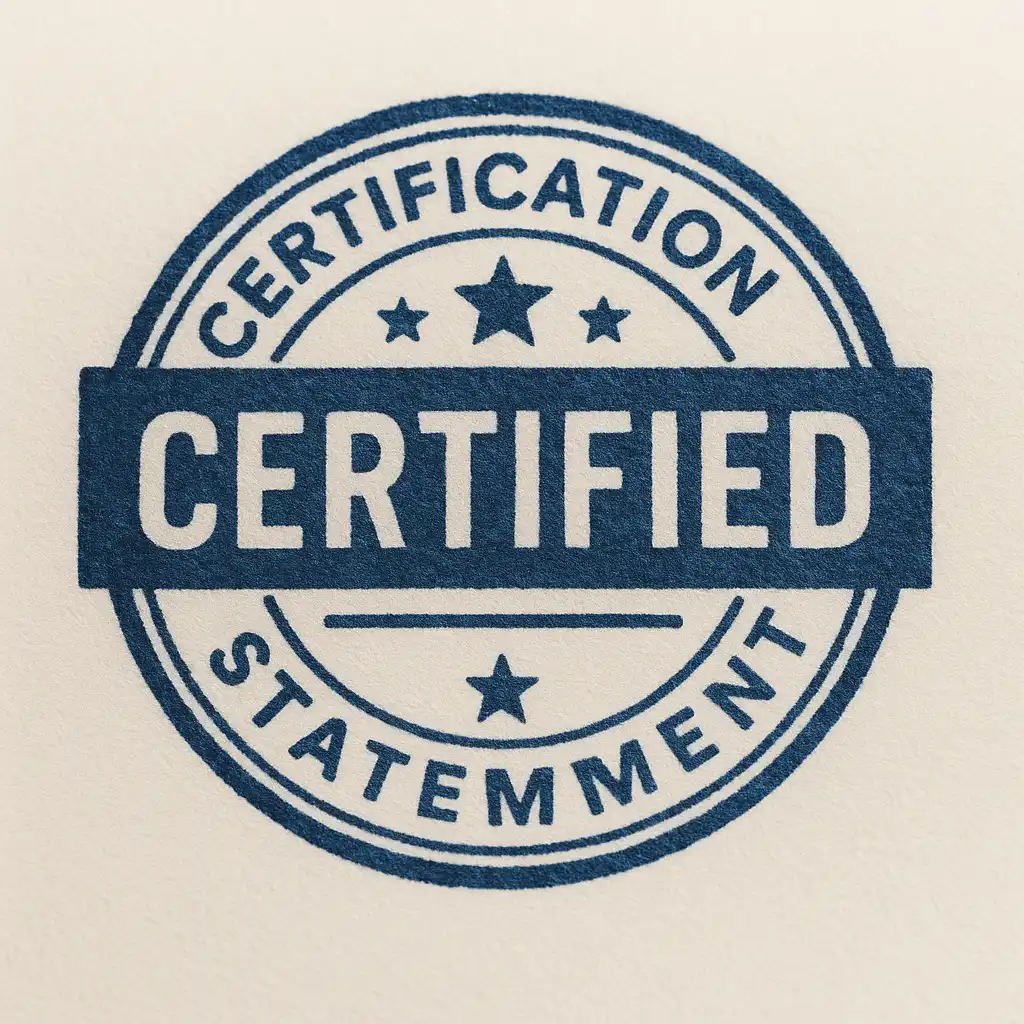
Translator’s name and contact
A signed declaration
Date of translation
Translator’s qualifications (if required)
💡 In some countries (e.g. France, Germany, Brazil), it must be done by a sworn translator approved by the government.
🤖 Mistake #5: Using Google Translate for Marriage & Birth Certificates
Some people try to save money by copying text into machine translation tools.
But immigration officers can tell.
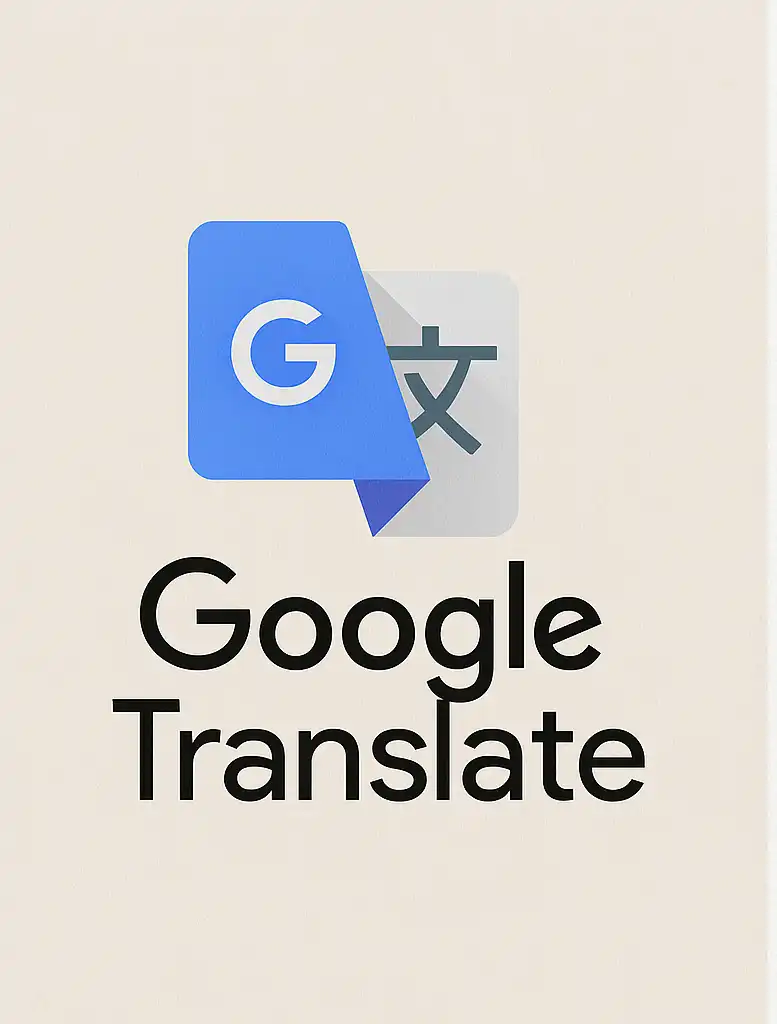
Fun fact:
In one internal audit, Google Translate turned “登记日期” (registration date) into “birthday” in 22% of translations.
✅ What to do:
Hire a human translator with real experience—especially in legal and immigration documents. It’s worth it.
👀 Bonus Mistake: Not Reviewing Before Submitting
Many people don’t double-check the translation before handing it in.
That’s how things like:
- Spelling errors
- Missing sections
- Wrong dates
…go unnoticed until it’s too late.
✅ What to do:
- Read through your translated document carefully
- Confirm that names, dates, and locations match
- Ask your translator if anything looks unclear
✅ Quick Recap: What to Avoid
Skipping details in Marriage & Birth Certificates:
| Mistake | What to Do Instead |
|---|---|
| Skipping details | Translate everything—stamps, seals, even blanks |
| Wrong format | Follow the country’s required layout |
| Name mismatch | Use exact spelling from passport/ID, add a note |
| No certification | Ask for a certified translation with a signed note |
| Machine translation | Use a qualified human translator |
| Not reviewing before sending | Check every line before you submit |
🎯 Want It Done Right the First Time?
We specialize in Chinese-to-English Marriage & Birth Certificates translation, along with:
- Marriage certificates
- Birth certificates
- Household registration
- Divorce and adoption papers
📎 All translations include:
- ✅ Correct format for your country (Australia, US, Canada, etc.)
- ✅ A proper certification statement
- ✅ Optional bilingual layout
- ✅ Fast delivery in 1–2 working days (no rush fee)
Whether you’re applying for a visa, PR, or study abroad, getting your Marriage & Birth Certificates right the first time saves time and stress. Want a free quote or have questions? Contact us!
High-Stakes Chinese Translation: 8 Types of Documents That Are Risky to Translate
